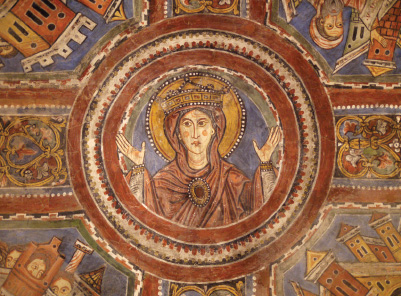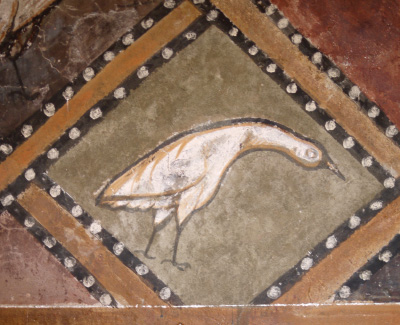![]()
DESPITE the proximity of Rome, or perhaps because of this, the ancient cities of the southern Lazio are less well known than these deserve to be. Palestrina with its Roman past and Ferentino, still partly protected by its ancient walls, are both remarkable, but neither has quite the appeal of Anagni, which lies between them on a ridge. Anagni was taken by the Romans in 306 bc, but little survives of their ordered plan. The town even now has a medieval air. Long controlled by the Caetani, Anagni had its period of glory in the thirteenth century. Three members of a prominent family of the town, the Segni, were elected to the papacy, the formidable Innocent III (1198–1216), Gregory IX (1227–41) and Alexander IV (1254–61), while Benedetto Caetani, Pope Boniface VIII (1294–1303), maintained a close association with the town.
Anagni lies at the centre of the prosperous Valle Latina, and I am glad I first saw it crowded on market day with vendors almost blocking the narrow streets. In the northern section of the town it is worth seeing a stretch of the early town wall and glancing briefly at the Casa Barnekow, a restored fourteenth-century house. Further on is the restrained, but also much restored, Palazzo Comunale of 1159–63, which has been attributed to Giacomo da Iseo. Higher up are a number of medieval palaces with later accretions. More remarkable is the palace of Boniface VIII, which was in fact built for Gregory IX, who was visited there by the Emperor Frederick II in 1230; it was here that Pope Boniface was seized by supporters of Philippe le Bel of France in 1303, only to be freed after two days by his local supporters. Two rooms retain sections of contemporary decoration, including the Sala degli Ocche (geese) with depictions of geese and other birds in lozenges arranged diagonally.

Cathedral, crypt: Virgin, fresco (detail of vault), after 1231.
Cathedral Campanile.
Nearby, at the south end of the town, is the Romanesque cathedral, largely built under Bishop Pietro between 1077 and 1104, but remodelled in the following century. It was here in 1160 that the intemperate Pope Alexander III formally excommunicated Frederick Barbarossa, a decisive moment in the long struggle between the Church and the Holy Roman Empire. The campanile is particularly satisfying, and the interior of the church is remarkable by any standard, with the pavement of before 1227 by Cosma di Jacopo, protagonist of the Cosmati family, a handsome ciborium, and an exceptional paschal candelabrum signed by Vassalletto, who also made the bishop’s throne of 1263. Two flights of steps lead down to the crypt, the nave of which is screened by columns from the flanking aisles. The pavement of after 1231 is by Cosma and his sons, Luca and Jacopo. The frescoes of between 1231 and 1255 include scenes from the Old Testament and the Apocalypse, and are among the finest of their date in southern Italy, robust in colour and forceful in design. Off the crypt, with murals of the same period but of more routine calibre, is the chapel of Saint Thomas à Becket. Becket’s cult was strongly encouraged by Innocent III and his successors, as he had so strenuously supported the pretensions of the papacy to control religious appointments in England. A contemporary Limoges reliquary of the saint is in the treasury of the cathedral. Equally remarkable are the vestments associated with Innocent III and a cope with New Testament scenes now thought to be from Cyprus, presented by Boniface VIII in 1295. At Anagni, perhaps more than anywhere else, one can still sense something of the frisson between the religious and secular in medieval Italy.

Palazzo of Pope Boniface VIII: Sala degli Ocche, fresco (detail).